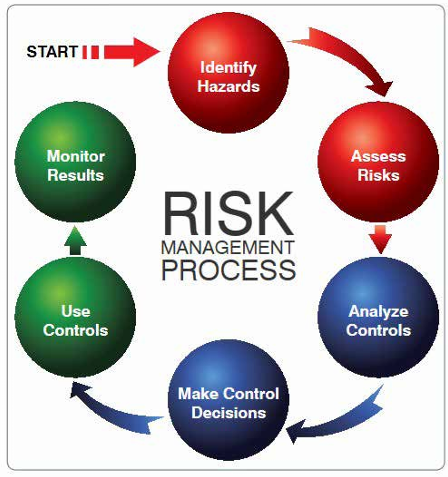
DECISION-MAKING IN AVIATION
Decision-making is a fundamental process that affects every aspect of life, with individuals making hundreds of decisions daily. While most of these decisions involve simple preferences with minimal consequences, some are context-dependent and evaluated based on their outcomes as either “correct” or “incorrect”. The decision-making processes of humans are inherently complex and prone to error, often assessed afterwards.
Errors in decision-making can be attributed to various cognitive and situational factors, which are sometimes classified as “incorrect”. Common types of such errors include ignoring or neglecting relevant information or alternatives, leading to suboptimal outcomes. Additionally, overestimating one’s knowledge or abilities can result in overconfidence, which may negatively influence decision outcomes. Another frequent error involves miscalculating the potential impact or probability of specific outcomes, which can distort and misguide decision processes. Ethical lapses can also adversely impact decision-making, leading to unfavorable choices. Furthermore, disregarding critical information or failing to recognize significant patterns can weaken decision-making processes, potentially resulting in adverse outcomes.
In the aviation sector, the processes of decision-making, while rooted in fundamental cognitive mechanisms similar to other domains, are distinctly influenced by the high-risk and dynamic nature of the context. Professions such as air traffic control, piloting, and aircraft maintenance technicians require effective decision-making under time constraints, incomplete information, and conflicting objectives. In the extant literature, judgment and decision-making are often interlinked; while decision-making is based on the analysis of facts, judgment incorporates a value component. These two processes reflect the outputs of an individual’s attention and memory mechanisms.
Human errors in aviation have a significant impact on the effectiveness of decision-making processes. Research indicates that 42% of human errors in aviation result from decision-making errors, 35% from action errors, and 23% from information errors [1]. Decision-making errors are often associated not with simple mistakes in executing intentions but with flaws in the intentions themselves. Such errors frequently arise from the decision-maker’s misunderstanding of the situation or reliance on incomplete information. Determining the correct decision can be challenging due to ambiguous standards and the complexity of the situation. Moreover, the weak correlation between the decision-making process and its outcomes can lead to misleading evaluations of decisions.
Aeronautical Decision Making
The Federal Aviation Administration (FAA) defines Aeronautical Decision-Making (ADM) as a systematic mental process used to determine the most effective course of action for a given situation. ADM is a critical process aimed at enhancing flight safety for aviation professionals [2]. This process adopts a multidimensional approach, encompassing not only technical skills but also the accurate assessment of situations, the analysis of potential scenarios, and the selection of an appropriate action plan. The foundation of ADM is rooted in systematic thinking and problem-solving techniques. To implement ADM effectively, personnel are required to possess both theoretical and practical cognitive abilities, along with adequate training.
ADM is comprised of three stages: perception, understanding, and process. In the initial stage, the precise perception of the prevailing situation is ensured. During this phase, environmental factors and potential risks must be accurately identified, and critical information must not be overlooked. The second stage entails the analysis of the perceived information within its context to derive meaning, as well as the identification of the underlying causes of factors influencing the current situation. The third stage involves the use of available information to predict future scenarios more effectively and to develop an appropriate action plan. ADM promotes not only responsiveness to current conditions but also a long-term, proactive approach.
To support ADM, the FAA has developed various frameworks, including the Risk Management Model (RMM), the DECIDE Model, and the 3P Model (Perceive, Process, Perform). The DECIDE Model comprises six fundamental steps: Detect, Estimate, Choose, Identify, Do, and Evaluate. These steps provide a comprehensive framework, beginning with the analysis of a situation and culminating in the evaluation of outcomes resulting from implemented decisions. The DECIDE Model is particularly useful under time pressure, enabling logical and systematic decision-making in complex scenarios.
Another essential component of ADM is the Risk Management Model (RMM), which involves identifying potential hazards, prioritizing them appropriately, and determining an acceptable level of risk. This model does not aim to eliminate risks entirely but to reduce them to a manageable level. Awareness of risks and preparedness to address them are especially critical in high-risk aviation environments.
The 3P Model, a simplified and user-friendly version of ADM, incorporates three phases: Perceiving hazards, Processing them in relation to the overall situation, and Performing appropriate actions. The 3P approach enables real-time decision-making, thereby providing increased flexibility in managing complex situations.
Situational Awareness and Decision-making
Decision-making processes in aviation are directly related to Situational Awareness (SA). Situational Awareness involves the processes by which decision-makers perceive environmental factors, comprehend their meaning, and anticipate future scenarios. According to a leading model in the literature, situational awareness consists of three stages: perception, comprehension, and projection [3]. Perception (Level 1 SA) is the process of recognizing environmental factors and the current characteristics of a situation. Comprehension (Level 2 SA) refers to the interpretation of the perceived information in alignment with the decision-maker’s goals, while projection (Level 3 SA) involves assessing the current situation and predicting potential future scenarios. These processes form the foundation of effective and accurate decision-making. Both individual factors (goals, expectations) and system factors (workload, automation, interface design, etc.) influence the levels of situational awareness.
Situational awareness, especially in dynamic and rapidly changing flight environments, is considered a fundamental element of effective decision-making processes. Deficiencies in situational awareness are a significant cause of accidents in aviation. A study investigated the types and frequencies of SA errors in aviation by examining reports related to flight safety in the FAA’s reporting database through searches for the term “situational awareness” [4]. The findings revealed that 76.3% of identified errors were Level 1 SA errors, 20.3% were Level 2 SA errors, and 3.4% were Level 3 SA errors. These results indicate that most situational awareness errors in aviation are related to the failure to accurately perceive and monitor available information. Such deficiencies can lead to misjudgment of risks, particularly in dynamic and high-stress environments, thereby creating a basis for incorrect decision-making.
Cognitive Biases: Confirmation Bias, Overconfidence, and Hindsight Bias
Cognitive biases that affect decision-making processes play a critical role in flight safety within the aviation industry. Among these biases, confirmation bias and overconfidence are particularly significant. Confirmation bias refers to the tendency of individuals to seek out and give more weight to information that supports their existing beliefs or assumptions [5]. This can lead to the neglect of alternative viewpoints and potential risks, hindering focus on critical information. In high-risk industries like aviation, confirmation bias can create a misleading sense of accuracy, leading to faulty decision-making and jeopardizing flight safety.
Similar to confirmation bias, overconfidence is another cognitive bias that negatively impacts decision-making processes. Overconfidence describes the tendency of individuals to overestimate their knowledge, skills, or decision-making abilities [6, 7]. This can lead to inadequate risk analysis and the simplification of complex situations, resulting in poor decisions. In the aviation sector, particularly during emergencies or unexpected scenarios, the effects of overconfidence become more pronounced and can have serious consequences for flight safety. Recognizing both confirmation bias and overconfidence is crucial for developing strategies that minimize these effects.
Another important concept related to these biases is hindsight bias [8, 9]. Hindsight bias occurs when individuals develop a false sense of having predicted the outcomes of past events. This bias typically manifests as thoughts like “I knew that already” or “I expected that result” after learning the outcome of an event. Hindsight bias makes it difficult to understand the reasons behind past mistakes, preventing lessons from being learned. In aviation, hindsight bias is frequently observed during accident and incident investigations. Investigators’ knowledge of the outcome can make it challenging to understand why decisions made at the time seemed rational. This tendency may lead decision-makers to overlook factors such as available information, time pressure, and uncertainty during the investigation process. Additionally, hindsight bias can cause individuals to develop a blaming attitude toward themselves or others, which can negatively impact team performance and trust. To minimize the impact of hindsight bias, it is recommended to adopt analysis methods in accident investigations that are conducted “without knowledge of the outcome”. These approaches not only facilitate learning from past mistakes but also contribute to the development of more effective and reliable decision-making processes in the future. Consequently, the effects of cognitive biases at both the individual and team levels can be minimized, ultimately enhancing flight safety.
Development of Decision-Making Processes
Technological and educational interventions aimed at enhancing decision-making processes in aviation not only improve flight safety but also focus on optimizing individuals’ cognitive capacities. In this context, augmented reality (AR) and virtual reality (VR) based simulations enable the real-time testing and enhancement of decision-making skills. These simulations provide participants with complex and realistic scenarios, allowing them to analyze various dimensions of decision-making processes. Additionally, these technologies aim to enhance individuals’ situational awareness and their capacity to cope with stress.
Decision Support Systems (DSS) play a critical role in supporting decision-making processes in modern aviation operations. These systems utilize big data analytics and artificial intelligence algorithms to provide aviation professionals with context-specific recommendations. Especially under uncertainty and time pressure, the informational support provided by these systems minimizes the risk of faulty decision-making. Automated alert mechanisms inform users of potential hazards while offering alternative solutions, thereby improving operational efficiency.
Training programs aim to enhance decision-making abilities at both individual and team levels. Crew Resource Management (CRM) and Team Resource Management (TRM) training, in particular, improve communication, collaboration, and leadership skills, increasing the effectiveness of decisions made within a group. These programs enable team members to synchronize their situational awareness and make more informed decisions in critical situations. Additionally, stress management and cognitive load reduction techniques help decision-makers optimize their mental processes.
The effectiveness of decision-making processes in aviation should be supported not only by technology and training but also by a systematic approach. Advanced data integration accelerates the flow of information across different units of aviation operations, allowing decision processes to be executed more coordinately. Furthermore, multidisciplinary research conducted to better understand and improve decision-making processes combines knowledge from fields such as human factors and psychology, providing a more comprehensive understanding. These integrated approaches are considered key elements in minimizing human errors and enhancing flight safety standards in aviation.
